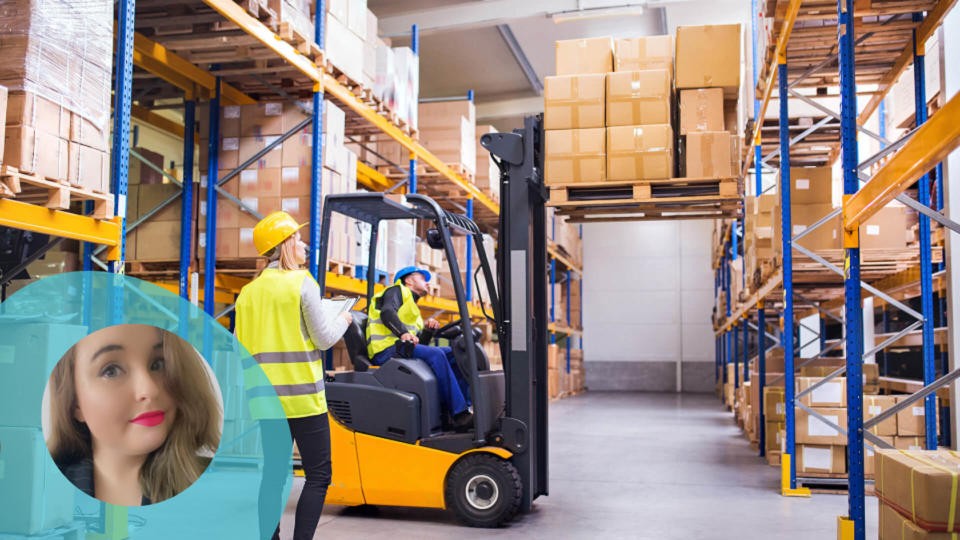The retail and logistics industry in the U.S. is approximately a quarter of a million workers short in 2022. Workers are no longer jumping at the opportunity for a job in the sector; working in warehousing has gained a notorious association with challenging conditions. So what can be done to attract quality workers in this extremely competitive labor market? And what on earth does safety tech innovation have to do with it?
Well, it’s really quite simple. It starts with understanding that the modern employee is looking for something more than just a job. Workers will no longer accept being just another cog in the machine. They’re searching for meaningful experiences that enhance their day-to-day life. They want to work for organizations that value them as whole human beings who choose to spend just part of their time at work.
So what can you do to attract and keep good workers? Simply increasing wages and benefits is not going to cut it. Workers want something different now, and organizations that invest in the physical and mental health of their workers are at the top of that list. This is where safety tech innovation comes in. Not only does the new tech on the market have a massive role to play in reducing workplace injuries, boosting productivity, minimizing absenteeism and maximizing engagement, but it can also be the very thing that sets your company apart from the competition in the labor market.
Leading the charge in this particular field are AI-driven safety wearables. These small, lightweight devices are designed to monitor the behavior of workers and alert of any hazardous movements that could lead to back or shoulder injuries. These alerts improve awareness and reduce the overall risk of injury. It becomes possible to track progress, complete training modules, analyze data and produce visually appealing reports through mobile apps and centralized dashboards to target and reduce ergonomic risk.
But the use of this tech goes far beyond just pure injury prevention. In a competitive labor market, such as warehousing, investing in wearable safety tech to facilitate a more proactive, comprehensive approach to employee wellbeing can be a powerful tool to communicate to workers that they are truly valued, and not merely for their output.
One of the major benefits of implementing wearable safety tech and an AI data-driven approach to injury prevention is the role it plays in improving engagement and morale. Implementing a wearable safety program can increase workers’ sense of purpose, encourage their personal growth and development and empower them to have informed conversations with their managers; all of which leads to higher levels of engagement across the board.
Another major benefit is the impact on staff retention. Safety wearables can help to reduce the likelihood of burnout, foster flexible working conditions, build positive work environments where employees feel valued and cared for — all of which fosters loyalty and reduces turnover.
Including something like wearable safety tech in your organization’s arsenal can really go a long way to fortify the value proposition for workers and bring new, quality employees on board. But finding and hiring these workers is one thing; once you’ve got them, how do you keep them?
The first step to increasing retention is onboarding. In the first six months of starting a new job, most new hires are still deciding whether they will stay with the organization long-term. Research shows that a company will lose one in six of those new hires each month on average for the first three months. This is why onboarding is vital to ensure retention, and wearable safety tech has a critical role to play.
Manual handling training is usually included in onboarding processes. But studies prove that traditional safety training is not as effective as it should be. Not only does this training usually not stick, it also is not engaging, leading to many new starters mentally checking out before they’ve even begun their new job.
Incorporating wearable safety tech and AI data-driven safety solutions into onboarding processes can not only improve workplace safety overall but also involve new hires in engaging conversations about their own safety from the get-go. This is the kind of solution that sets workplaces apart and fosters dedicated, passionate employees that will stick it out for the long haul.
There can be no doubt that the retail and logistics warehousing sector is facing a staff shortage crisis. Smart organizations are adapting; incorporating new technologies to ensure that they remain competitive in the labor market. The adoption of wearables in the safety training space is one small change that can make a very big difference, leading not only to a significant reduction in costs as a result of workplace injuries but also to growing workplaces that attract and keep quality employees.
Anina-Marie Van Wyk is the Content Manager for Soter Analytics, a global safety science company producing AI-driven wearable solutions that reduce the risk of ergonomic injuries. Soter’s current clients include Giant Eagle, Travis Perkins, UFA, Wincanton, Woolworths and Roy Hill. Van Wyk has researched the impact and benefits of wearable safety technology and written for industry publications including OH&S Magazine, ISHN, Insurance News, Safety Solutions and Open Access Government.




